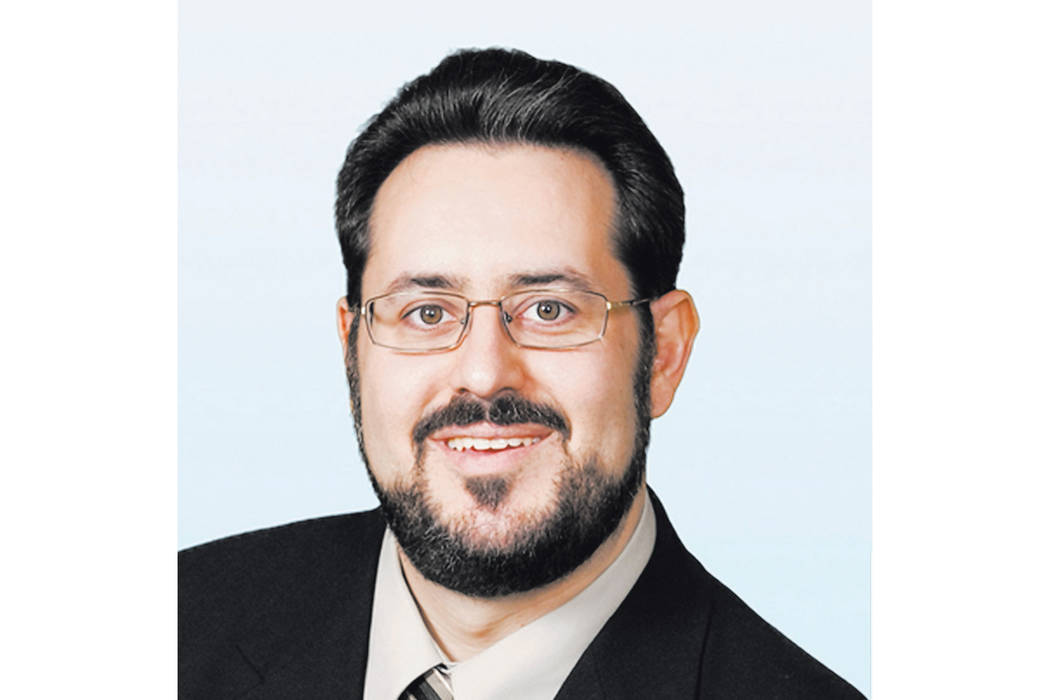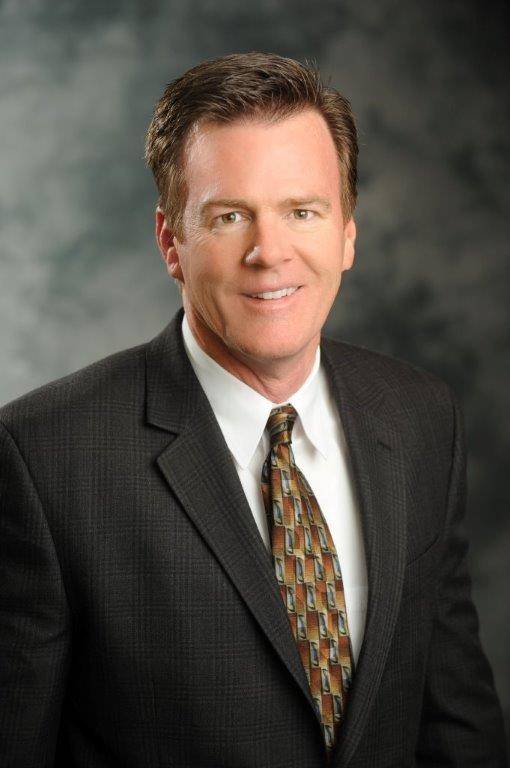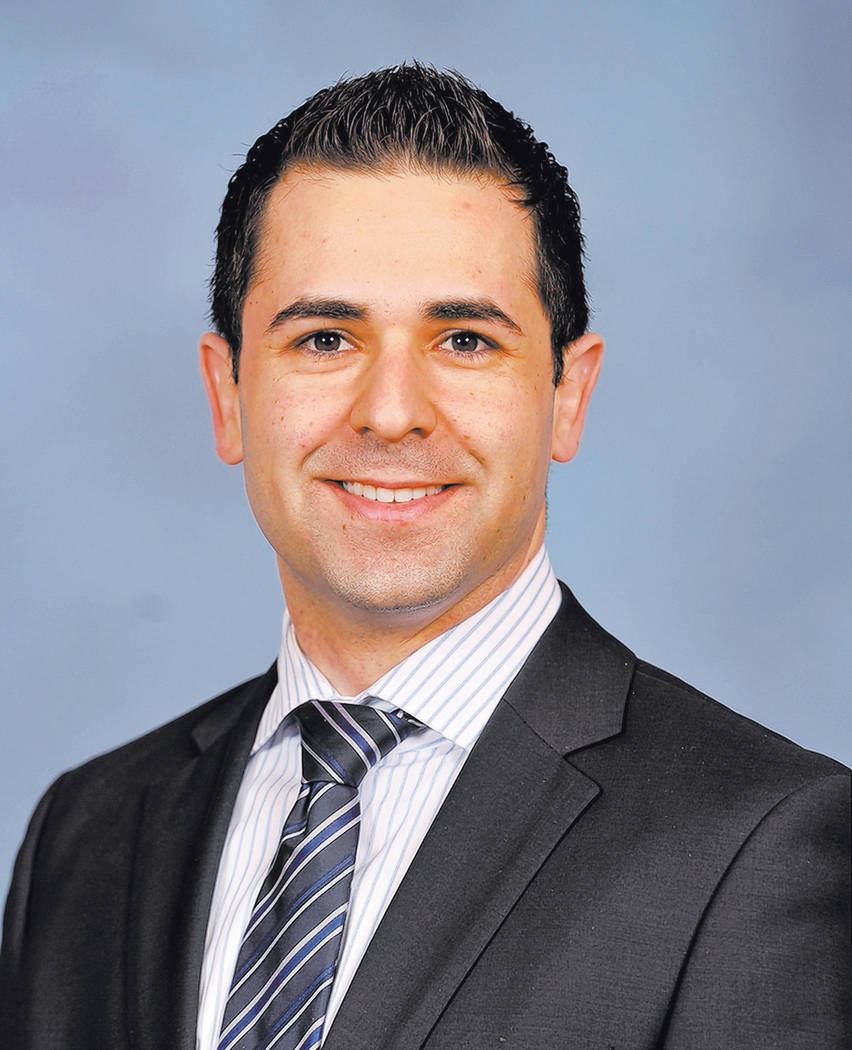The vacancy rate for the office and retail market through the first six months of the year continued to show marked improvement over the Great Recession while the red-hot industrial market saw its vacancy rate inch up during the second quarter, according to the midyear report released by Colliers International. The study said Las Vegas is well-positioned whenever the next recession hits.
The latest numbers matched a July 18 monthly breakfast meeting hosted by the Southern Nevada chapter of NAIOP, the development organization. It hosted a presentation at The Orleans about how the next six to 24 months look for development, construction and brokerage. Panelists talked about the office market more than any sector having the best opportunities going forward in the next couple of years.
In it’s midyear report, Colliers said the Southern Nevada economy was strong through the first six months even though job growth was continuing but slowing. The brokerage firm said while there’s a lot of positive indicators, there are signs the economy is slowing down nationally and locally.
“Despite the talk of a looming recession, Southern Nevada’s economy appeared sound in the midyear of 2019,” said John Stater, research manager with Colliers in Las Vegas. “It is difficult to opine on the economy with recession talk in the air. As reassuring as the current economic conditions might be, they do not predict what the economy will look like in the near future.”
Stater said that if there’a a bright side, it’s that Southern Nevada “does not appear to be uniquely vulnerable to a recession now, compared to its status before the Great Recession. In those days, a housing bubble loomed over an otherwise vibrant economy, and Southern Nevada may as well have been the symbol of that housing bubble. Whatever economic storm will greet us in 2020, Southern Nevada should be better positioned to weather a storm than it was a decade ago.”
In Southern Nevada, Stater said commercial real estate investment sales volume at midyear 2019 was $559.7 million in 95 sales, totaling 3.1 million square feet. That represented a significant decrease compared to the first half of 2018 when sales volume reached $1.1 billion in 155 sales, totaling 7.9 million square feet.
The average price per square foot for commercial property was $179.13 per square foot at midyear 2019, a 28.3 percent increase from the $139.59 per square foot average price in 2018.
“It seems likely that this significant jump is not only a matter of higher overall prices, but also of a different mix of property types that sold,” Stater said. “Investment sales volume in the second quarter of 2019 decreased on a year-over-year basis for office properties (negative 77.7 percent), industrial properties (negative 56.4 percent), single-tenant retail (negative 14.9 percent) and shopping centers (negative 13.8 percent). Only medical properties showed a year-over-year sales volume improvement, of 54.5 percent, in the second quarter of 2019.”
Industrial net absorption was more than 1.8 million square feet in the second quarter with Amazon and Sephora build-to-suites in North Las Vegas accounting for most of that. The vacancy rate inched up from 3.2 percent in the first quarter to 3.4 percent in the second quarter, but that’s still below the 4.9 percent at the end of June 2018.
The industries that were most active in occupying space in the first half of 2019 were involved in transportation, services, wholesale and manufacturing, Stater said. Local companies took 30.5 percent of the leased square footage. Companies headquartered in the Great Plains took 18.1 percent of the space occupied, Midwestern companies 11.2 percent and Southwest firms 10.9 percent.
“This quarter continued the trend of the broader national appeal of Southern Nevada’s industrial market that began in 2018,” Stater said.
The second half of 2019 should see the completion of an additional 5.1 million square feet of industrial space, with approximately 31 percent of that space pre-leased. Industrial vacancy rates will continue to increase in the second half of 2019 unless leasing activity picks up, Stater said.
With that backdrop, Stater said investment sales of industrial properties appear to have peaked in 2018. At midyear 2019, industrial investment sales volume was $168.6 million in 32 sales totaling 1,437,000 square feet at an average sales price of $117.39 per square foot.
“Although investment sales were strong in 2018, there was a trend of diminishing sales over the course of the year, and this trend continued in 2019,” Stater said. “It is notable that prices for industrial buildings have increased dramatically over the past five years.”
Doug Roberts, partner with Panattoni Development Co. that builds projects for Amazon nationwide, said during the NAIOP panel discussion said he’s “on edge” and “skittish” about what’s going to happen to the Southern Nevada industrial marketplace in the next few years given the rising price of land and higher development and construction costs.
“We are working to assemble smaller parcels to make bigger parcels,” Roberts said. “Everything has been picked over, and you have to be more creative about how you go about things.”
Kerry Cartmill, senior director of pre-construction for DC Building Group told the NAIOP members that tariffs on steel and some wood products and higher costs with a shortage of labor given the projects underway continues to be a factor.
Roberts said it cost $25 to $30 per square foot to build an industrial project in the early 2000s, but that has since increased to $110 to $115 per square foot.
Roberts said he’s concerned developers are stretching to make sites work. He said there’s no way to make every project getting built to work based on the last 10 years of average absorption.
“It’s going to slow down in the next three, four to five years,” Roberts said. “It’s going to be nothing like 2008 and 2009. That was miserable.”
But Roberts added Nevada has a saving grace in Californians continuing their migration to the state and creating opportunities in the future.
“You can’t stop them. There’s no border or wall,” Roberts said to the laughter of the audience. “They will keep coming, and growing is going to happen. You just have to be cost-effective and smart.”
Roberts said the Las Vegas industrial market has matured with bigger buildings, more technologically advanced and marketed-oriented ones. That trend is helped by national companies that choose Las Vegas and what they’ve constructed in other marketplaces, he said.
“You can’t imagine how this market was viewed 20 years ago versus now in the size of the market and buildings being built,” Roberts said. “If you would have built a 730,000-square-foot building on spec 20 years ago, we would have been laughed out of town. It’s a completely different market. It has established itself as a strong tier two market (with 135 million square feet compared to 300 million in Phoenix).”
In the retail marketplace, Stater said it’s on track to have it’s best year in a decade with the vacancy rate falling to 7 percent at the end of June, down from 8 percent a year ago. At midyear, Southern Nevada’s retail market had 805,953 square feet of net absorption. Year-to-date, new completions totaled 493,266 square feet, the largest expansion of retail inventory in nine years, Stater said.
Retail properties that were completed this quarter were 90 percent pre-leased, Stater said. The second half of 2019 should see the completion of 571,807 square feet of retail space, 46 percent of it pre-leased.
When retail inventory grows, occupied square footage usually follows because newly completed anchored retail centers rarely open without their anchors in place, and those anchors occupy anywhere from 50 to 90 percent of the center, Stater said.
In 2019, there have been three retail centers completed, and the second phase of an existing center finished, Stater said.
“Net absorption has reacted as we would expect, but 2019’s net absorption cannot be explained entirely by the completion of new retail centers,” Stater said. “It’s somewhat surprising, given the recent trend of e-commerce expansion seemingly at the expense of traditional retail, is the uptick in retail demand in Southern Nevada. Several large spaces leased or sold in the first half of 2019, sending vacancy to its lowest level in a decade. We think the second half of 2019 will see positive net absorption and vacancy dropping even lower.”
The office vacancy rate fell to 12.7 percent during the second quarter, down from 15.1 percent a year ago, Stater said.
Demand for office space over the past four quarters came primarily from health services, professional and business services, financial activities and education and social services companies.
In deals Stater said were tracked, local tenants took 76.8 percent of the leased space, followed by tenants headquartered in the Midwest at 8 percent, Southwest at 5.5 percent and Southeast at 4.3 percent.
Vacancy remained higher than the pre-2006 average of 9 percent, but has shown significant improvement over the past two years, Stater said. Until this quarter’s relatively weak net absorption, the office market looked as though it was on the cusp of a significant expansion in 2019, he added.
Taber Thill, a senior vice president with Colliers International who spoke to the NAIOP panel on the office market, said it has taken 10 years from 2008 to 2018 to have spec office development, and expects more to take place as space is occupied by co-working spaces.
Thill said there’s pent-up demand in the southwest valley with a 2.4 percent vacancy rate, but increasing rent and land prices pose a problem for entry to that area.
“There’s a lot of pent-up demand and we are seeing a flight to the suburbs rather than the core and why the southwest has been so hot between Summerlin and Green Valley,” Thill said.
Las Vegas continues to benefit from California with its taxes continuing to increase. Executives had moved their headquarters to Southern Nevada to use about 6,000 square feet, but they’re now willing to move the entire operations here with a need for tens of thousands of square feet of office space.
The renewed push for speculative office development is “exciting and timely” to take advantage of business relocations, Thill said.
“The clock is the biggest deterrent,” Thill said. “We may get overlooked because we don’t have the product available to satisfy companies, and we may lose them to Texas, Arizona or Utah.”
Thill said the Hughes Center east of the Strip will continue to be attractive to office tenants looking for space in Las Vegas because its high-end Class A space and has rents that are slightly lower than the southwest valley.
“It’s no longer the high-water mark, and I think with companies concerned about image and price it’s going to have a resurgence,” Thill said. “I think price will be the savior for the Hughes Center and its proximity to the Las Vegas Convention Center. I think out-of-state users at first glance at the market will take down some of that space.”
The panel discussion was moderated by Hayim Mizrachi, president and principal of MDL Group.











